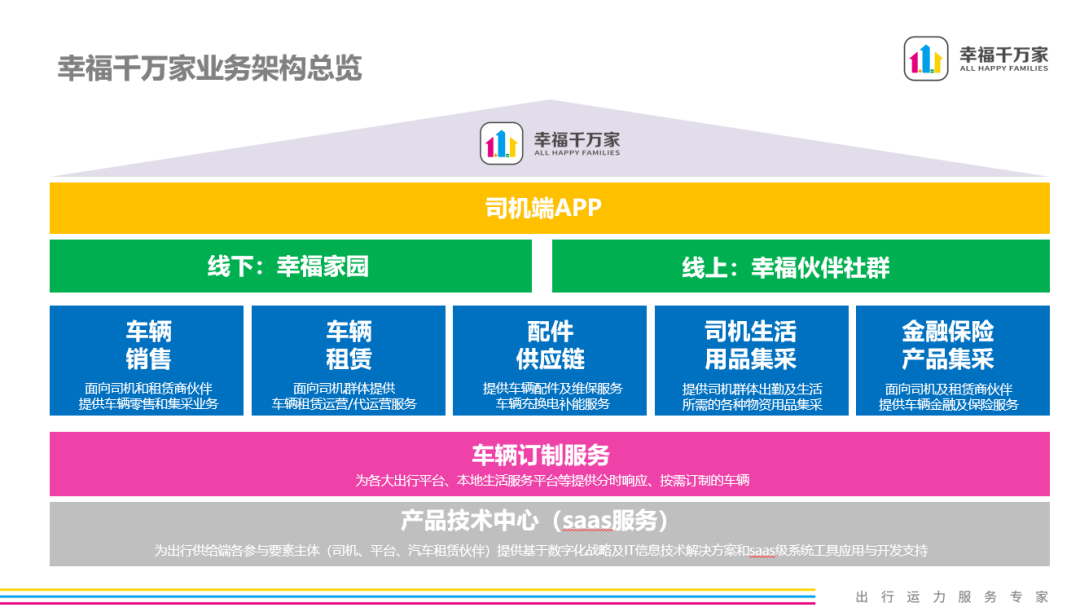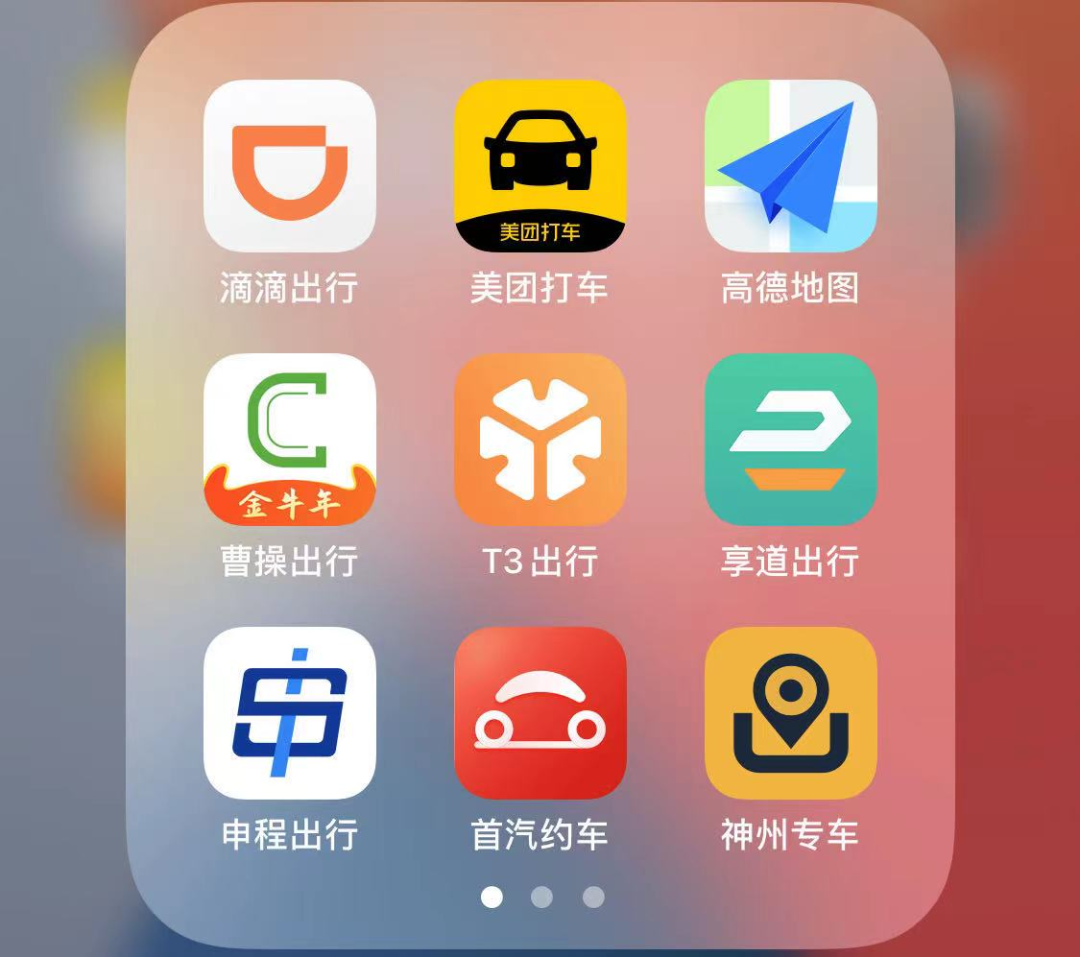Three Phases of Development in the Ride-Hailing Industry
If the ride-hailing industry were to be divided into three stages of development, they would generally be defined as follows:
-
The Wild Growth phase, marked by Didi’s acquisition of Uber China on August 1st, 2016.
-
The High-speed Expansion phase, marked by Didi’s US IPO on June 11th, 2021.
Under intense pressure, Didi began to recede, allowing various forces to expand and seize market share. At the same time, since last year, the Ministry of Transportation and other departments have introduced strict supervision policies, requiring ride-hailing drivers to hold “double certificates” to go on duty.
This means that the ride-hailing industry has entered its third phase: the Adjustment period. After the Wild Growth and High-speed Expansion, compliant operations are the trend, and customers demand safe, reliable, high-quality travel. In the overall market transition from “disorder to order,” travel service companies are required to keep up with the trend and provide comprehensive, thoughtful, and refined travel services and experiences.
Data shows that the “Big Travel” market, where ride-hailing is located, has grown to nearly 400 million users in 2021, with an average of 30 million daily transactions, and the trading volume is expected to surpass ¥400 billion in 2022, while still maintaining a high growth rate.
There are two rigid demands during this phase: from the demand side, the total demand of “Big Travel” is still rising; from the supply side, there is a huge market space for compliant vehicles needing to be updated every five years.
However, everything has two sides, and in such a large market, there are many challenges that need to be resolved urgently from both supply and demand ends.
Both Drivers and Platforms Are Struggling
Let’s first take a look at the ecological status of ride-hailing drivers.
The most basic physiological needs of a person are eating, drinking, defecating, and sleeping, and all of these are difficult for ride-hailing drivers to achieve. Three meals a day cannot be served on time or in a fixed location, they may have to eat cold meals at one time and hot meals at another. In order to earn money, they must drive for more than 12 hours a day, and cannot drink too much water because going to the bathroom not only consumes time but also adds extra mileage to the trip. Professional diseases are difficult to avoid, with cervical and lumbar spondylosis being the most common, and there are also many people suffering from prostate and hemorrhoids.
Many drivers say that they have become increasingly disconnected from society and family since they started driving for ride-hailing companies. All they do is look at their phones, pick up orders, and drive. They have become “tools,” “modern-day coolies” who work for the internet.
Making money is possible, but difficult.
-
Due to intense competition among ride-hailing platforms and price-cutting, commissions taken from ride-hailing drivers have increased, while fares have become lower and lower.
-
As a result of increasingly strict government supervision, ride-hailing drivers are fined for minor mistakes and often face complaints from passengers.
Many veteran drivers long for the “subsidy feast” era, but unfortunately, the “good times” are gone. Large gift packages, order bonuses, commission waivers, and other benefits are a thing of the past, and they can’t change the state of “dying of illness in the struggle for life” caused by the pressures of the job.
Therefore, most ride-hailing drivers lack a sense of security, let alone happiness. They take it one day at a time, making money while they are young, and are rarely engaged in long-term planning.The essence of the transportation industry is service, and customer satisfaction should be the top priority. Drivers and vehicles are the fundamental components of the transportation capacity, and only by providing good services to them can we provide good and satisfactory services to passengers and users. This is just like only by providing good service and management to delivery drivers can customers enjoy timely and reliable food delivery.

How can we provide a comfortable and secure transportation service if the ride-hailing drivers are not comfortable and secure? We often focus only on the discounts and convenience offered by various platforms, but the core problem and pain point of this market is actually on the drivers.
At present, ride-hailing drivers are not only the “ills of the market,” but also potentially a social problem.
Let’s take a look at the difficulties of ride-hailing platforms.
Of course, ride-hailing platforms cannot be generalized. Specifically, they can be divided into two types: independent travel platforms such as Didi, T3, and Cao Cao, and traffic aggregation platforms such as Baidu, Gaode, and Meituan.
The core demand of independent travel platforms is both transportation capacity and traffic volume. The transportation capacity of traffic aggregation platforms comes from various-sized travel platforms; when the tide rises, all boats float.
However, the problem is that the ride-hailing market lacks systematic and large-scale integration management for supply-side transportation capacity.
Firstly, the compliance rate is low. According to statistics, there are 1.42 million operating taxis in the country, and the number of compliant ride-hailing vehicles is over 1.5 million, with more than 3 million verified practitioners, 3 million daily active vehicles, and 6 million monthly active vehicles.
As compliant capacity accounts for less than 20%, many ride-hailing platform companies work against regulations by recruiting or inducing unlicensed drivers and vehicles to join illegally.

Secondly, transportation capacity is dispersed. There are 236 ride-hailing enterprises that have obtained ride-hailing platform operation permits across the country, and new ride-hailing platform start-ups are emerging one after another, leading to duplicate construction, dispersion, and mobility of transportation capacity.
Thirdly, low operational efficiency. Ride-hailing companies are fragmented and weak, lack unified service standards, and have varied service levels, which results in a lack of stability and balance in the long term, leading to low overall operational efficiency.
Fourthly, high operating costs. Ride-hailing transportation service providers lack effective operation management, have scarce resources, and a single enterprise profit model. Coupled with a lack of premium pricing ability, the high operating costs limit the development of the enterprise.
So, are there any solutions to the pain points of ride-hailing drivers and ride-hailing platforms?
A Chongqing-based transportation compliance and capacity management service provider attempted to provide an answer.
“Our team, the Dream Team, has profound and accumulated expertise in all aspects,” said Liu Jinliang, Chairman of Chongqing Happiness Millions Home Technology Co., Ltd, with a great sense of pride.
According to the introduction, the team members are professionals from world top 500 automobile companies, internet communication, shared travel and financial sectors. Liu Jinliang himself is a veteran of Geely Holding Group, founder and director of Caocao Travel, chairman of Weixing Technology Co., Ltd. (Yaochu Xing) and also in charge of Langge Technology Co., Ltd.
So, what changes will Liu Jinliang lead his team to bring to the “big travel” market?
A beautiful business model
Literally, “Happiness Million Families” looks a lot like a non-profit organization. However, it is not.
Its business model can be summarized in one sentence:
“To create an open and symbiotic travel service ecosystem, professionally empower the participants (drivers, operators, platforms) in the travel industry, and provide one-stop services for driver groups, including training, exam and certification, vehicle sales, vehicle rental, vehicle maintenance, financial solutions, order empowerment, energy supply, catering life, etc., to create a happy home for drivers; for operators, it provides customized low-cost procurement of vehicles, full life cycle management of vehicle assets and operational empowerment to achieve cost reduction and profit enhancement; and for platforms, it provides compliant transportation capacity.”

“Liu Jinliang said that “Happiness Million Families” must be operated as an enterprise, “but at the turning point of the transformation of the travel market, we need to do business that can solve market pain points and meet future trends.””
Since it is an enterprise operation, there must be a business model.
Currently, there are three relatively mature business models for travel platforms: vehicle sales and leasing business, travel operation management, and financial services. This is also the main business of “Happiness Million Families”.
So, what market pain points does it solve?
As mentioned earlier, there are four major pain points in the online travel market: low compliance rate, scattered capacity, low operational efficiency, and high operating costs. The vision of “Happiness Million Families” is to empower millions of drivers and become the world’s largest online travel service platform for capacity. Its vision aims directly at the first two pain points.
To this end, “Happiness Million Families” will build a professional and open driver service ecosystem called “Happiness Home”.
The services provided by “Happiness Home” mainly consist of two parts: vehicle services and driver services. Selling cars, renting cars, insurance, post-maintenance and repair, vehicle violation handling, etc. belong to vehicle services; recruiting, training, business processing, rest, catering, blue-collar apartments, self-service sales, medical care, haircuts, laundry, bathing, etc. belong to driver services.
 Liujinliang said that the core competitiveness of “Happy Millions of Families” should be reflected in enhancing the happiness of ride-hailing drivers, bringing together these “tools” who lack a sense of belonging and minimizing negative energy while maximizing positive energy. “Only when drivers have a sense of happiness and a consciously independent service attitude, can they provide truly satisfactory services to passengers and users.”
Liujinliang said that the core competitiveness of “Happy Millions of Families” should be reflected in enhancing the happiness of ride-hailing drivers, bringing together these “tools” who lack a sense of belonging and minimizing negative energy while maximizing positive energy. “Only when drivers have a sense of happiness and a consciously independent service attitude, can they provide truly satisfactory services to passengers and users.”
Therefore, “Happy Home” will pay great attention to overall functional design, with the principle of practicality, simplicity, security, and credibility, and the key indicator is whether it can become a “second home” for drivers.
Liujinliang stated that “Happy Home” also needs to continuously deepen and refine the services provided to drivers. For example, daily necessities, renting, childcare and education, loan financing, etc. can all be obtained through centralized procurement to achieve more affordable solutions.
“This is our unique and irreplaceable core value, which can be regarded as Android or Harmony OS in the software ecosystem.” He believes that when this service ecosystem is established, there will be great potential for profit and imagination, and many new businesses and revenue models will emerge as the service ecosystem grows.
According to the plan, for every more than 1000 vehicles connected, a “Happy Home” center with an area of 1500~3000 square meters needs to be built, and several 150~500 auxiliary centers need to be matched.
“Since it is a platform model, there should be dos and don’ts. In other words, we need to provide necessary resources and services to demand-side users who enter the platform, but we cannot compete with them for profits.”
Liujinliang has a clear understanding of this. “From the positioning point of view, not competing for the user side will bring us huge cooperation and expansion space for our services. Our business is more focused and more professional, that is, to provide ‘happy transportation capacity’ for the driver side, so we will not neglect other aspects.”
In fact, whether it is C2C, B2C, or aggregation platform, these ride-hailing platforms have invested heavily in the user side, but the effect is not significant.
In my opinion, “Happy Millions of Families” is going against the trend in at least two aspects that other ride-hailing platforms would welcome.
Firstly, they open up their transportation capacity, which other platforms undoubtedly welcome. As a transportation supply platform, it does not conflict with other passenger travel platforms, and there is no “zero-sum bloodshed” or competition to convert users of other travel platforms.
“We are going to provide transportation capacity for various travel platforms, and it will be ‘happy transportation capacity’ with spiritual fullness, good condition, and thoughtful service.” Liujinliang smiled.- Second, open service. After the service system is perfect, the driver’s side of “Happy Million Homes” can dock with any 2C ride-hailing platform or aggregation platform to provide services for their drivers.
Actually, the business model of “Happy Million Homes” is also preparing for the era of unmanned driving, as Liu Jinliang said, “business in line with the overall trend of the future.”
For example, “Happy Million Homes” will operate a part of the vehicles in-house, and also seek “City TOP” partners to join in various regional markets. This is not only a consideration of the current reality, but also a forward-looking layout.

Currently, the self-operated vehicles used are the Geely Emgrand EV PRO, which meets the market requirements in terms of endurance, performance, and quality.
As “Happy Million Homes” continues to grow in scale and integrates with surrounding industries, it will cooperate with partners from all sides to build a “pure electric car transportation service ecosystem” that integrates R&D, manufacturing, promotion, vehicle maintenance, battery diagnosis and repair, battery recycling, and hierarchical utilization for exclusive car models based on the product of smart electric cars.
Liu Jinliang said that “Happy Million Homes” will also pay special attention to technological progress and changes and choices of car models for future travel. They already have many ideas and plans for future car models, and even a name: Happiness No. 1.
He reminded the media that even in the era of unmanned driving, even if there is no driver, each car still needs services such as energy supplement, cleaning and maintenance. “Happy Homes” is just laying out ahead of time for the era of unmanned driving.
Moreover, even if the era of autonomous driving arrives, will drivers definitely be replaced?
Liu Jinliang believes that services with drivers and services with only machines are both services, and the key is to see what kind of service is safe, convenient, and comfortable, and even more importantly, to provide “happiness” to customers, which should be left to the users’ decision.
Conclusion:
In the interview, Liu Jinliang revealed the underlying logic of Geely’s creation of “Happy Million Homes.”
The national policy has been determined, to go from virtual to real, to build a society of shared prosperity by 2030. This is the general direction. At the same time, in the travel industry, the platform economy opposes monopoly, unfair competition, and uncontrolled capital expansion, which is also a definite trend.
This requires ride-hailing platforms to move from “market layout-oriented” and “user expansion-oriented” to lean operating directions such as safe travel, service first, and core capacity. In fact, more and more platforms are paying more attention to the scale, systemization, and standardization of partners.
 In this context, “Millions of Happy Homes” (幸福千万家) has emerged, committed to creating a “Happy Mobility” system, which is both a market demand and a strategic move for Geely in the field of large-scale mobility.
In this context, “Millions of Happy Homes” (幸福千万家) has emerged, committed to creating a “Happy Mobility” system, which is both a market demand and a strategic move for Geely in the field of large-scale mobility.
From a positive perspective, “Millions of Happy Homes” is not only a highly promising entrepreneurial project in the field of mobility, but also a long-cycle “new infrastructure” project for future intelligent mobility, and a valuable and visionary “happiness project.”
However, ideals are often far from reality, and even cruel.
Firstly, it is easy to build “Happy Homes,” but creating a “Happy Mobility” system is a long and arduous task that tests strategic decision-making and execution capability.
Secondly, the acceptance of “Millions of Happy Homes” by ride-hailing platforms is crucial, as it concerns not only the mobility resources that are hard to come by, but also data and safety.
Will “Millions of Happy Homes,” born with a golden key in their mouths, become a game-changer in the market of large-scale mobility?
Just as I was about to conclude, I received a screenshot: Meituan Dache has already appeared in the “Millions of Happy Homes” driver’s interface.
A good beginning.
This article is a translation by ChatGPT of a Chinese report from 42HOW. If you have any questions about it, please email bd@42how.com.
